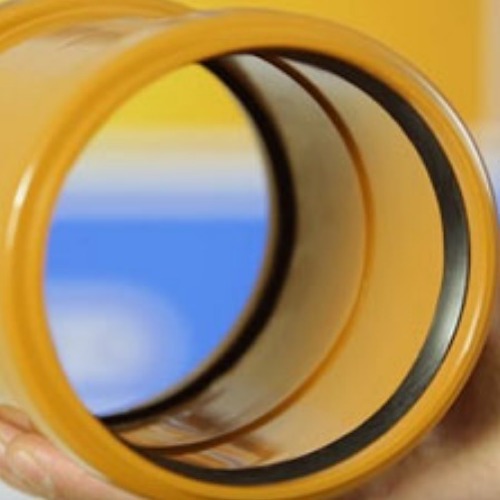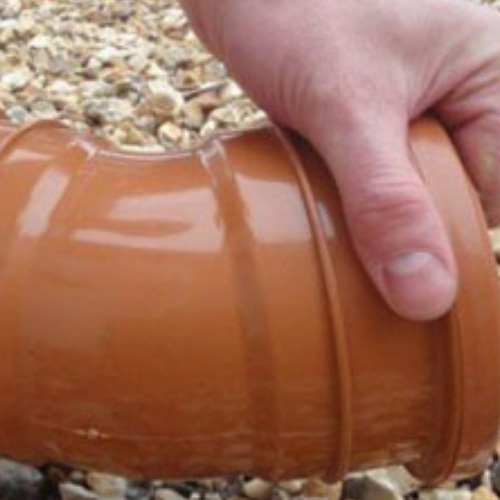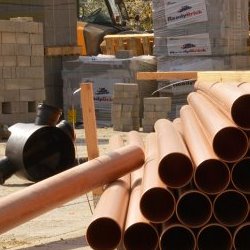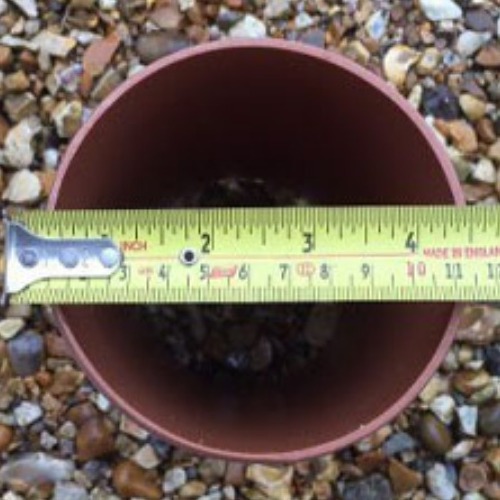Types of Drainage Systems
In addition to our standard 110mm and 160mm pipes and fittings, we offer a range of specialised drainage solutions:
- Cast Iron Pipes and Fittings: Manufactured from high-grade cast iron, these pipes offer unparalleled resistance to high pressure and corrosion. This makes them the ideal choice for a wide range of drainage applications.
- Rainwater harvesting systems: Capture and reuse rainwater for diverse purposes, such as watering plants, toilet flushing and vehicle washing.
- Channel drainage: Slotted drains ideal for draining stormwater from driveways and patios.
- Soakaway crates: Versatile products suitable for sustainable drainage applications like infiltration and attenuation.
- Twinwall drainage: Large HDPE pipes commonly utilised for surface water applications.
- Sewage treatment plants: Water cleaning tanks designed for properties without mains drainage connections.
Underground Drainage Pipes
Our range of cast iron and plastic underground drainage pipes and fittings, adhere to British Standards, offering reliability and a high level of performance.
We offer various underground drainage pipe sizes. Alongside our standard 110mm and 160mm pipes in this section, we also stock Cast Iron Drainage available in 100mm, 150mm and 200mm, Twinwall Pipes ranging from 150mm to 600mm, as well as an extensive selection of soil and waste pipes. The majority of domestic drainage pipes are now made from lightweight and manageable PVC-u, providing ease of handling compared to traditional clay drains. Our flexible drainage couplings ensure seamless connections between plastic and clay pipes.
All our socketed plastic underground drainage pipes and fittings incorporate a captive seal and snap cap, engineered for user-friendly installation without sharp edges. Considering space constraints, these fittings facilitate an easy-fit connection. The Halifax Cast Iron Drain system features a socketless, mechanically jointed design that simplifies installation and reduces ongoing maintenance requirements. It is designed to minimise installation difficulties and maintenance costs over its lifetime, making it a "fit and forget" system.
For detailed insights into our drainage fittings, explore our video product reviews covering drainage pipe bends, junctions, and couplings in our guides and tips section.
WHAT IS UNDERGROUND DRAINAGE?
Underground drainage is used to describe the network of pipes and fittings installed below ground level to transport foul drainage or rainwater flows to appropriate disposal facilities. Manufactured primarily from PVC-u for durability and minimal maintenance, underground drainage systems facilitate smooth flow and efficient drainage.
Underground drainage pipes and fittings are almost always Golden Brown (terracotta) in colour. This makes identification easy, as soil pipes installed above ground level are usually in UV-stabilised colours such as black, grey or white.
The Halifax cast iron drainage system has a two-part epoxy coating - the exterior is red for above-ground applications and grey for below-ground. The interior of the Halifax underground drainage pipes is lined with a two-part grey epoxy finish, which provides improved performance when exposed to aggressive substances.
HOW TO INSTALL UNDERGROUND DRAINAGE?
Proper installation of underground drainage pipes involves laying them in a trench lined with pea shingle, ensuring correct fall for efficient drainage. Accessibility for testing, inspection, and maintenance is paramount, following drainage design principles. Planning drainage installations, guided by architectural drawings, help locate critical components such as gullies, inspection chambers, and rainwater adaptors.
CUTTING & JOINING DRAINAGE PIPES
Plastic drainage pipes offer the advantage of easy cutting and joining compared to clay pipes. Standard fine-toothed saws facilitate precise cutting, with chamfering and lubrication essential before joining pipes to fittings. This straightforward process ensures secure and reliable connections, accommodating expansion and ground movement.
Halifax Soil and Drainage pipes are easy to cut on-site for shorter lengths using a powered saw with a metal cutting disc (not a manual hacksaw). These cast iron pipes offer traditional durability with the benefit of modern jointing methods that reduce installation costs.
For in-depth guidance on underground drainage installation, refer to installation guides in the guides and tips section or our comprehensive instructional video.
HOW LONG DO PVC DRAINAGE PIPES UNDERGROUND LAST?
Whilst this depends on the exact composition of the surrounding soil, any PVC underground drainage pipe manufactured to BS4660 or BS EN 1401 should last more than 50 years.
The life of any drainage system will be prolonged by proper installation and regular maintenance when required. Slow flows, gurgling sounds from the sink, bath, or shower, or foul odours in the house or garden are all signs of a blocked drain and should be investigated as soon as they occur.
COMPATIBILITY WITH SOIL & WASTE SYSTEMS
Our underground drainage products are fully compatible with our above-ground PVC-u soil and waste systems.
In the plastic drainage section, you will find all of the most commonly used drainage bends and different types of connectors and adaptors along with gully traps and other basic components of the drainage system. This system is interchangeable with all other leading manufacturers of 110mm and 160mm systems.
Additionally, our Halifax drain system is also compatible with Halifax cast iron soil and cast iron mech 416 systems. The standard couplings within the Halifax Soil and Drain systems are suitable for connecting products made of other materials into the system, as long as the external diameters are the same.







